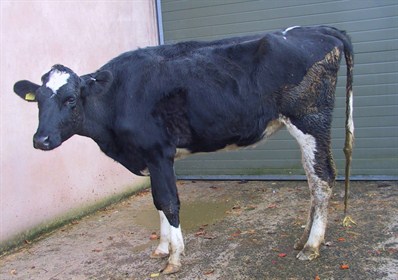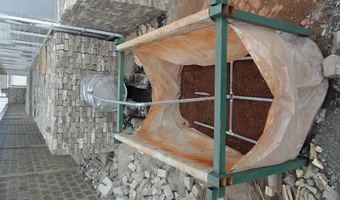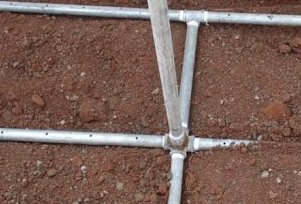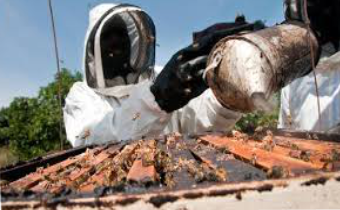 A calf infected by two parasites of the same species is more likely to live and develop immunity against the deadly East Coast Fever that one attacked by a single parasite a new study says.
A calf infected by two parasites of the same species is more likely to live and develop immunity against the deadly East Coast Fever that one attacked by a single parasite a new study says.
The findings of the study which could offer real insights in understanding, and taming a disease that kills one animal after every 30 seconds, can also be applied in curbing other parasitic infectious diseases including Malaria in humans. "We now know that certain parasite co-infections can have strong protective effects--as strong as those offered by vaccines--against certain deadly diseases," said infectious disease epidemiologist Thumbi Mwangi of Washington State University's Paul G. Allen School for Global Animal Health. Mwangi is a co-author of the study based in Kenya, where the study was conducted.
Researchers conducting the study monitored 548 shorthorn zebu calves belonging to consenting smallholder farmers, from birth to one year. Before the end of the year, 17 percent of the calves died. Blood tests revealed that of the 454 that survived, 86 percent were infected by an additional parasite. Interestingly only 18 percent showed symptoms of East Coast fever, while the others had no clinical signs of being exposed to the disease.
The researchers also found out that the healthy calves were also infected by a related,but less harmful, parasite species. There has been major development in treatment against the East Coast Fever with a sophisticated vaccine that has saved many livestock but still experiences drawbacks. Made with irradiated T. parva, the virus that causes East Coast Fever, packed into a shot, it is expensive and must be administered along with a syringe-full of antibiotics. The findings of the study now means with the other parasites instead, which would be safer, less costly and easier to administer because no antibiotics would be necessary according to the scientists.
East Coast fever is a devastating cancer-like disease of cattle that often kills the animals within three weeks of infection. It is caused by the single-celled parasite Theileria parva, which is transmitted by the brown ear tick (Rhipicephalus appendiculatus) as it feeds on cattle.
The disease was first recognized in southern Africa when it was introduced at the beginning of the twentieth century with cattle imported from eastern Africa, where the disease had been endemic for centuries. Last year more than one million cattle in 11 countries died and caused a loss of about Sh26 billion. Many of the animals threatened by the disease belong to poor pastoralist herders and smallholder farmers for whom the loss of even one cow can be disastrous.
Write comment (0 Comments)



 ny of the clients who adopted the kits have been struggling with emerging issues. It is this turn of events that have prompted Mutuni Christopher an agronomist working with Amiran to source for an ideal solution to continue keeping clients happy.
ny of the clients who adopted the kits have been struggling with emerging issues. It is this turn of events that have prompted Mutuni Christopher an agronomist working with Amiran to source for an ideal solution to continue keeping clients happy.  According to him, he then had to devise a method that was ideal for killing this disease causing micro organism in the soil any time of the year without relying on sun availability hence the birth of the soil steaming technique.
According to him, he then had to devise a method that was ideal for killing this disease causing micro organism in the soil any time of the year without relying on sun availability hence the birth of the soil steaming technique. According to research done by KARI, the most affected soils by the disease causing micro organisms are in Nyanza and Western regions of the country although farmers are advised to always conduct a soil analysis to ascertain the extent of damage of their soils. “Soil analysis is very vital for any farmer who is venturing into the smart especially given the high investments being made. These disease causing bacteria mostly affect tomatoes and green pepper.” The technology has already been demonstrated and adopted to farmers in Kisumu, Kiambu and Machakos.
According to research done by KARI, the most affected soils by the disease causing micro organisms are in Nyanza and Western regions of the country although farmers are advised to always conduct a soil analysis to ascertain the extent of damage of their soils. “Soil analysis is very vital for any farmer who is venturing into the smart especially given the high investments being made. These disease causing bacteria mostly affect tomatoes and green pepper.” The technology has already been demonstrated and adopted to farmers in Kisumu, Kiambu and Machakos. Traditionally practiced as a hobby with simple logs, bee keeping is emerging as a big business with farmers delving into commercial honey harvesting buoyed by burgeoning demand both locally and internationally. Farmers are now investing in modern hives built for high yield and easy harvesting.
Traditionally practiced as a hobby with simple logs, bee keeping is emerging as a big business with farmers delving into commercial honey harvesting buoyed by burgeoning demand both locally and internationally. Farmers are now investing in modern hives built for high yield and easy harvesting.










